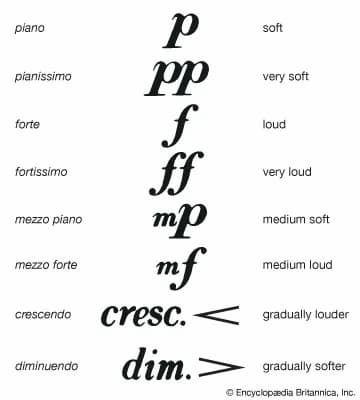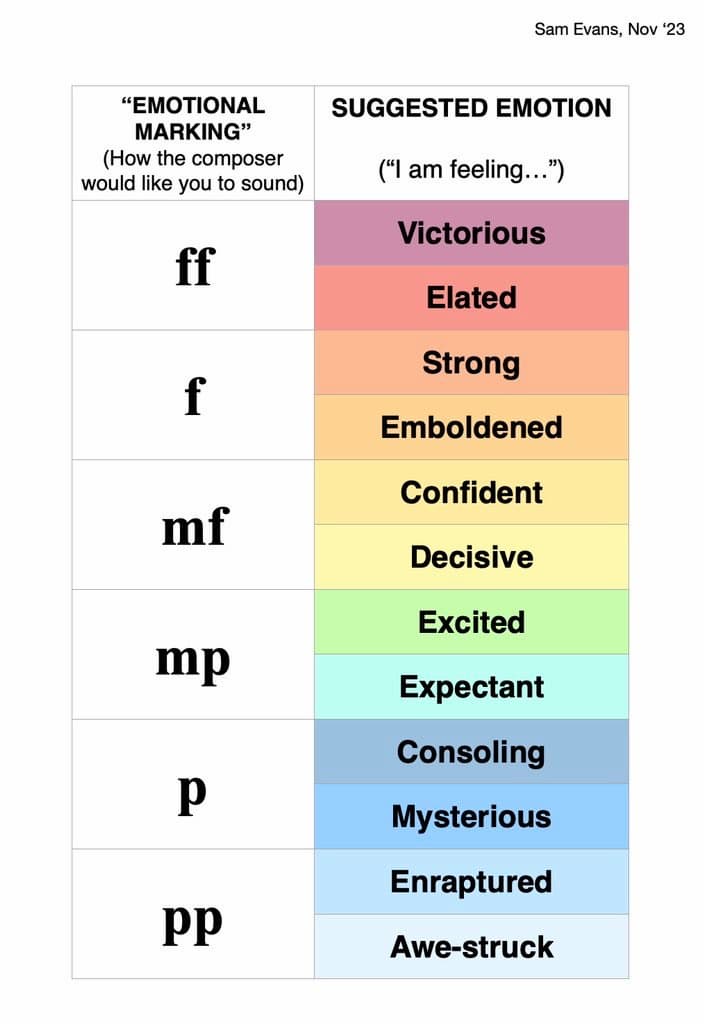“Dynamics” in music refers to the variation in loudness or intensity of sound. The use of dynamics adds depth, emotion, and expressiveness to the music, and the term encompasses a wide spectrum of volume levels, from the softest pianissimo to the loudest fortissimo – and everything in between. Understanding dynamics is essential for musicians, composers, and listeners, as it plays a crucial role in shaping the overall musical experience.
Anyone who has had music lessons from a young age will remember being taught the most basic definitions of dynamic markings, such as piano (quietly or softy) or forte (loud or strong); that crescendo means “getting louder”, diminuendo getting quieter, and so on.

These are rather simplistic definitions, and most students, especially young, early, or intermediate players, will apply them fairly indiscriminately in the repertoire they are playing if they don’t appreciate the context in which the dynamics are used. I remember explaining to one of my piano students that “not all piano markings mean the same thing”; the student looked at me as if I was mad – to her piano just meant ‘quietly’.
Composers use dynamic markings not only to indicate the volume of sound but also to express or enhance emotional elements in the music or to inform the narrative of the piece. Crescendos and diminuendos can heighten or diminish tension or add layers of complexity to the emotional narrative. A sudden shift from a full ‘orchestral’ forte to piano or pianissimo, for example, can bring a more intimate or introspective character to the music.
When learning music, it’s also important to understand that individual composers have their own individual dynamic palette, as it were. For example, fortes and fortissimos in Beethoven’s piano music can often be declamatory, bold or triumphant, recalling the sound of the brass section of the orchestra – take the opening chords of the Hammerklavier sonata, for instance. Another important aspect to bear in mind with regard to dynamic range in piano music is that the type of instruments with which Beethoven or Chopin, for example, were familiar were in general quieter because their design and construction did not allow for big, powerful fortes.
Ludwig van Beethoven: Piano Sonata No. 29 in B-Flat Major, Op. 106, “Hammerklavier” – I. Allegro (Angela Hewitt, piano)
When considering the dynamic range of a piece of music, it may be helpful to think in terms of specific feelings rather than just the volume of sound. This rather neat chart from Sam Evans was designed primarily for singers but is useful for any musician. Different emotions can be substituted for each dynamic level according to the piece of music.

For the performer, an appreciation of “emotional” or “psychological dynamics” to suggest mood rather than obvious changes in the volume of sound is one of the many challenges of performing music.
For more of the best in classical music, sign up for our E-Newsletter
